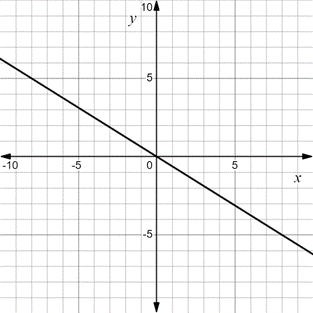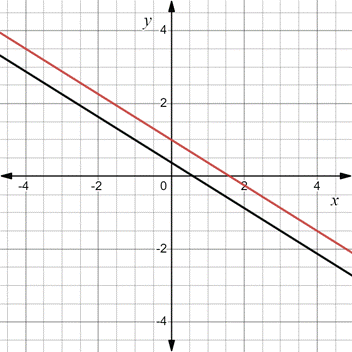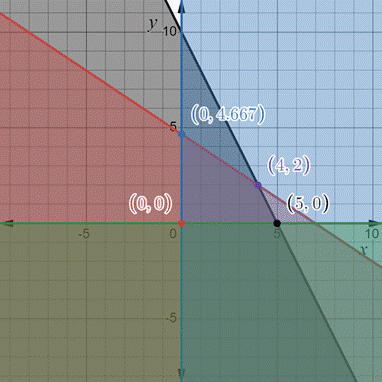
a.
To prove: For any two real number values for
The statement has prove.
Given Information:
The function is defined as,
Calculation:
Consider the given function,
Solve the function for y .
As the slope of the line is constant. So for any two values of f , the line is parallel as the value of f will changed.
Therefore, the given statement has proved.
b.
To determine: The reason to moves the line further away from the origin as the value of f increase.
The y -intercept is
Given Information:
The function is defined as,
Explanation:
Consider the given function,
First, Draw the given line for

Increse the value of

It can be observed that as the value of f is increasing then the line is moving furhter away from the origin. As this is intercept of y . As the value of intercept is increase then the distance will increase btween line and origin.
Hence, the value of f increase then line moving further away from origin.
c.
To explain: The geometric explanation for the region of example 6 must contain a minimum and a maximum value for f .
The closest point from the origin where a line intersects the restrictions area gives the minimum value, while the furthest point gives the maximum value of the objective function.
Given Information:
The objective function and constraint are defined as,
And,
Calculation:
Consider the given information,
And,
Draw the constraints.

The line
The lines
Therefore, the required explanation given above.
Chapter 7 Solutions
PRECALCULUS:GRAPH...-NASTA ED.(FLORIDA)
 Calculus: Early TranscendentalsCalculusISBN:9781285741550Author:James StewartPublisher:Cengage Learning
Calculus: Early TranscendentalsCalculusISBN:9781285741550Author:James StewartPublisher:Cengage Learning Thomas' Calculus (14th Edition)CalculusISBN:9780134438986Author:Joel R. Hass, Christopher E. Heil, Maurice D. WeirPublisher:PEARSON
Thomas' Calculus (14th Edition)CalculusISBN:9780134438986Author:Joel R. Hass, Christopher E. Heil, Maurice D. WeirPublisher:PEARSON Calculus: Early Transcendentals (3rd Edition)CalculusISBN:9780134763644Author:William L. Briggs, Lyle Cochran, Bernard Gillett, Eric SchulzPublisher:PEARSON
Calculus: Early Transcendentals (3rd Edition)CalculusISBN:9780134763644Author:William L. Briggs, Lyle Cochran, Bernard Gillett, Eric SchulzPublisher:PEARSON Calculus: Early TranscendentalsCalculusISBN:9781319050740Author:Jon Rogawski, Colin Adams, Robert FranzosaPublisher:W. H. Freeman
Calculus: Early TranscendentalsCalculusISBN:9781319050740Author:Jon Rogawski, Colin Adams, Robert FranzosaPublisher:W. H. Freeman
 Calculus: Early Transcendental FunctionsCalculusISBN:9781337552516Author:Ron Larson, Bruce H. EdwardsPublisher:Cengage Learning
Calculus: Early Transcendental FunctionsCalculusISBN:9781337552516Author:Ron Larson, Bruce H. EdwardsPublisher:Cengage Learning





